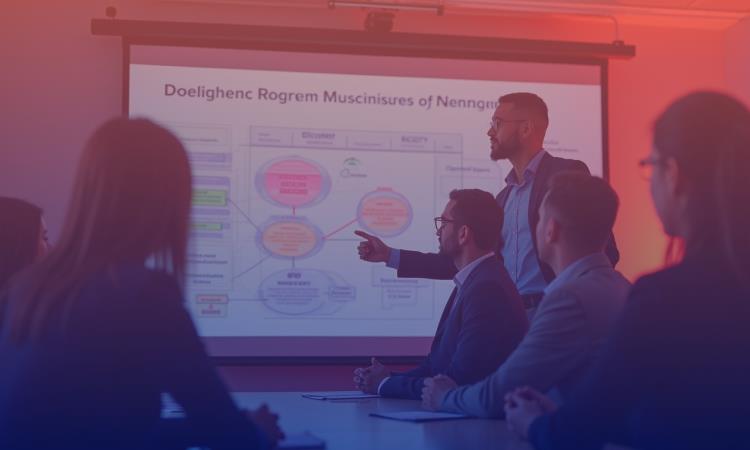Introduction
In today’s customer-driven landscape, organizations need more than just traditional metrics like revenue growth or cost reduction to measure success, because customer expectations have now become a defining factor in business performance. Which means that it is now crucial for companies to understand customer needs and effectively solve any problems they might face in order to retain them. Therefore, many companies are turning to design thinking as a structured approach to problem-solving. At the heart of design thinking lies journey mapping, a method of visualizing the end-to-end customer experience.
For C-suite executives, journey mapping is not just a design exercise; it is a strategic tool that connects customer expectations with the priorities of the organization. It highlights friction points, identifies unmet needs, and creates a roadmap for customer-centric decision-making.
According to Tanuj Paulose, Analyst at QKS Group, “Journey mapping has evolved from a static diagram to the C-suite’s operating system for customer outcomes, a living intelligence layer that unifies behavioral, emotional, and transactional data, enriched by AI and real-time feedback. By making emotions, touchpoints, and pain points visible, it quantifies gaps, aligns cross-functional priorities, and ties fixes to ROI, turning empathy into execution and sustained value. As vendors move from ‘map-making’ to end-to-end journey management, the leaders will be those who treat journey mapping not as a one-off artifact, but as a strategic discipline that breaks silos and powers adaptive, customer-centric growth.”
What is Journey Mapping?
Journey mapping is the process of visualizing the steps a customer takes when interacting with an organization, product, or service. It is not limited to transactions; it also includes emotions, motivations, and pain points across touchpoints. The objective is to see the experience from the customer’s perspective, rather than the company’s internal processes.
According to the Nielsen Norman Group (NNG), effective journey maps include stages of the journey, customer goals, touchpoints, and emotional highs and lows. This structured view makes it easier for organizations to align internal operations with external experiences.
Journey Mapping within Design Thinking
Design thinking emphasizes empathy, ideation, prototyping, and testing. Journey mapping directly supports the first stage, empathizing with the customer, by documenting real experiences instead of assumptions.
Incorporating journey mapping into design thinking offers organizations three main benefits:
- Holistic Perspective: It ensures decision-making is not fragmented but considers the full customer lifecycle.
- Prioritization of Pain Points: Leaders can identify high-impact areas where interventions deliver meaningful improvements.
- Cross-Functional Alignment: Journey maps function as a shared reference point for executives, product teams, and service designers, reducing silos.
Why It Matters for the C-Suite
For executives, journey mapping offers insights that go beyond operational efficiency and has become a strategic tool for shaping competitive advantage.
1. Chief Customer Officers (CCOs)
Journey mapping enables CCOs to quantify customer experience gaps and advocate for initiatives that directly impact satisfaction and loyalty. It provides evidence to secure executive buy-ins for customer-focused investments.
2. Chief Experience Officers (CXOs)
For CXOs, the map is a design blueprint. It highlights opportunities to orchestrate seamless, omnichannel experiences, which is important in an era where customers expect consistency across digital, physical, and service touchpoints.
3. Chief Marketing Officers (CMOs)
CMOs can use journey mapping to align messaging with customer context. Understanding where customers feel frustration or delight helps marketing teams create relevant and empathetic communication strategies.
4. Chief Technology Officers (CTOs)
From a technology perspective, journey maps help CTOs identify integration priorities. By pinpointing areas where fragmented systems hinder customer experience, technology investments can be more strategically directed.
5. Chief Financial Officers (CFOs)
CFOs benefit by linking journey mapping insights with financial outcomes. For example, reducing pain points in onboarding can lower churn and improve lifetime value, translating customer-centric initiatives into measurable ROI.
Actionable Insights for Executives
- CCOs: Use journey maps to demonstrate the cost of poor experiences and the value of targeted interventions.
- CXOs: Treat journey maps as a living document. They regularly update them as customer expectations evolve.
- CMOs: Leverage emotional highs and lows in the journey to design more empathetic campaigns.
- CTOs: Prioritize system upgrades that help reduce customer friction points.
- CFOs: Connect improvements in customer experience with financial metrics to validate investment decisions.
Conclusion
Journey mapping is more than a visualization tool; it is a strategic instrument that ties design thinking to executive decision-making. For the C-suite, it bridges the gap between customer expectations and organizational performance. By embracing journey mapping, leaders not only gain clarity on where their customers struggle but also a roadmap to deliver differentiated, sustainable value.

